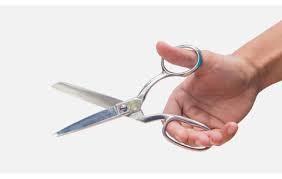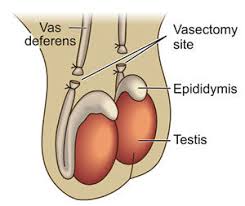 We at Fifth Avenue Urology have several years of experience in providing urological care to individuals of all age groups. As highly experienced urologists, we offer various urological services including but not limited to vasectomy, prostate cancer, and erectile dysfunction treatments. Our medical specialists, Drs. Michael S. Brodherson, Leonard Glickman, and Yaniv M. Larish are well versed in performing the vasectomy procedure.
We at Fifth Avenue Urology have several years of experience in providing urological care to individuals of all age groups. As highly experienced urologists, we offer various urological services including but not limited to vasectomy, prostate cancer, and erectile dysfunction treatments. Our medical specialists, Drs. Michael S. Brodherson, Leonard Glickman, and Yaniv M. Larish are well versed in performing the vasectomy procedure.
Before we perform a vasectomy on a patient, we take an undertaking from him that he doesn’t wish to become a father henceforth. We carry out the surgery in the operation theater or the office using local anesthesia or under sedation. Our urologists take all the necessary steps to ensure that the vasectomy is fully effective, maintaining a near 100% successful track record.
How does it work?
We recommend vasectomy to all men who have decided not to become a father in the future. At the same time, we suggest the surgical procedure to males looking for an efficient and secure birth control option. We can assure you that the surgery proves effective in checking pregnancy in nearly ten out of ten cases.
Our specialists conduct the operation as an outpatient process, and the risks of side effects or problems are almost zero. Once we complete the surgery, we can guarantee that the patient will never have to use a condom or any other contraceptive device or method before having sex.
What are the Steps in a vasectomy procedure?
The vasectomy procedure is usually complete in 15-30 minutes. To carry out the procedure, our urologists take the following steps:
- We first inject a local anesthetic in an area around the scrotum for numbing the region
- After the area becomes numb, we make two tiny incisions on either side of the scrotum
- After that, we identify the tube (vas deferens) which transfers the semen from the testicles to your penis
- Next, we pull out a section of the vas deferens via the incisions
- Subsequently, we sever that section of the tube that we’ve withdrawn
- We tie up the vas deference (for capping it) using the cauterization (heat) technique
- Finally, we seal the incisions on the scrotum by suturing (stitch) or gluing. Sometimes, we leave the slits open to enable the incisions to heal and close on their own
 From time to time, we resort to the non-scalpel vasectomy, where we make only one small puncture in the scrotal sac. This technique does away with the need to stitch the wound. The patient will experience a degree of pain, swelling, and contusion after the surgery.
From time to time, we resort to the non-scalpel vasectomy, where we make only one small puncture in the scrotal sac. This technique does away with the need to stitch the wound. The patient will experience a degree of pain, swelling, and contusion after the surgery.
Nevertheless, the pain will go away within 4-5 days, and the swelling will improve as well. We advise all our vasectomy patients to contact immediately if they notice any indication of infection on the operated area. The usual infection signs include bleeding, swelling, acute pain, and a body temperature is exceeding 38˚C (100.4F).
We give instructions to the patient on what to do and what not to if and when he notices a sign of infection. We recommend patients not to indulge in sexual intercourse for about a week following the vasectomy.
Conclusion
Our urologists make it clear to those undergoing vasectomy that the surgery will not offer immediate immunity against pregnancy. In the meantime, patients can use other birth control options for staying out of harm’s way until we conduct a semen analysis 2-3 months after the procedure.
You can get in touch with us for scheduling a vasectomy operation with the most acclaimed urologists in NYC.

[…] is a routine operation that usually does not last more than 30 minutes. Another name for this procedure is male sterilization. Doctors use two methods to perform a vasectomy. The first and most common […]
[…] is a reversible vasectomy? First, let’s start with what a vasectomy is. A vasectomy is a minor surgical procedure that involves a urologist making incisions and closing the vas deferens of a male to prevent the […]
[…] the beginning of the procedure, you will have your scrotal area shaved and washed (antiseptic solutions). Local anesthesia will […]